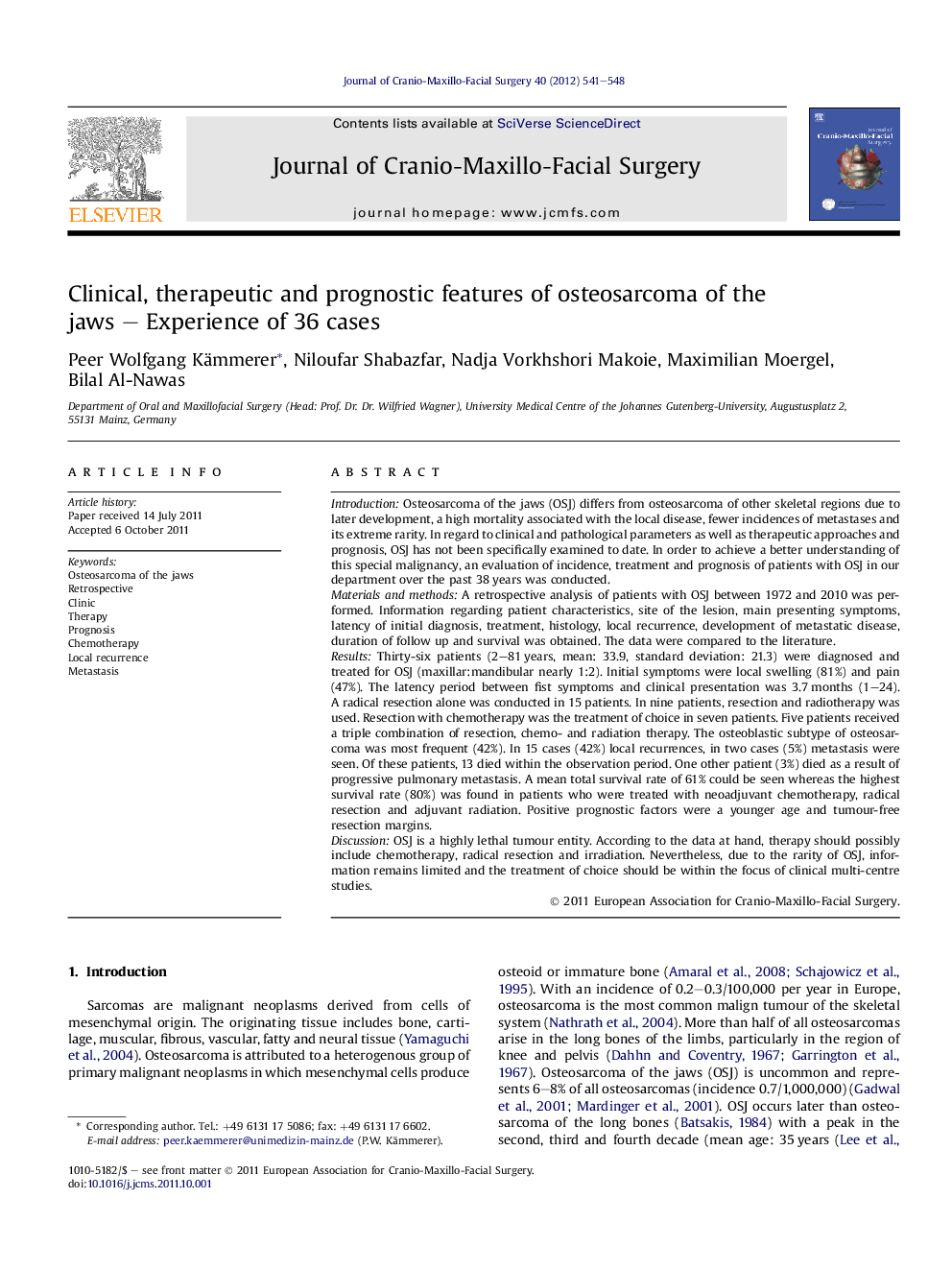| Article ID | Journal | Published Year | Pages | File Type |
|---|---|---|---|---|
| 3143020 | Journal of Cranio-Maxillofacial Surgery | 2012 | 8 Pages |
IntroductionOsteosarcoma of the jaws (OSJ) differs from osteosarcoma of other skeletal regions due to later development, a high mortality associated with the local disease, fewer incidences of metastases and its extreme rarity. In regard to clinical and pathological parameters as well as therapeutic approaches and prognosis, OSJ has not been specifically examined to date. In order to achieve a better understanding of this special malignancy, an evaluation of incidence, treatment and prognosis of patients with OSJ in our department over the past 38 years was conducted.Materials and methodsA retrospective analysis of patients with OSJ between 1972 and 2010 was performed. Information regarding patient characteristics, site of the lesion, main presenting symptoms, latency of initial diagnosis, treatment, histology, local recurrence, development of metastatic disease, duration of follow up and survival was obtained. The data were compared to the literature.ResultsThirty-six patients (2–81 years, mean: 33.9, standard deviation: 21.3) were diagnosed and treated for OSJ (maxillar:mandibular nearly 1:2). Initial symptoms were local swelling (81%) and pain (47%). The latency period between fist symptoms and clinical presentation was 3.7 months (1–24). A radical resection alone was conducted in 15 patients. In nine patients, resection and radiotherapy was used. Resection with chemotherapy was the treatment of choice in seven patients. Five patients received a triple combination of resection, chemo- and radiation therapy. The osteoblastic subtype of osteosarcoma was most frequent (42%). In 15 cases (42%) local recurrences, in two cases (5%) metastasis were seen. Of these patients, 13 died within the observation period. One other patient (3%) died as a result of progressive pulmonary metastasis. A mean total survival rate of 61% could be seen whereas the highest survival rate (80%) was found in patients who were treated with neoadjuvant chemotherapy, radical resection and adjuvant radiation. Positive prognostic factors were a younger age and tumour-free resection margins.DiscussionOSJ is a highly lethal tumour entity. According to the data at hand, therapy should possibly include chemotherapy, radical resection and irradiation. Nevertheless, due to the rarity of OSJ, information remains limited and the treatment of choice should be within the focus of clinical multi-centre studies.
